Related Research Articles
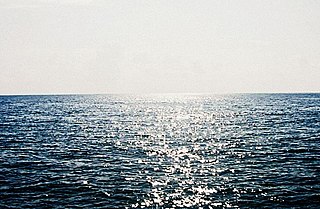
The Arabian Sea is a region of the northern Indian Ocean bounded on the north by Pakistan, Iran, and the Gulf of Oman, on the west by the Gulf of Aden, Guardafui Channel and the Arabian Peninsula, on the southeast by the Laccadive Sea, on the southwest by the Somali Sea, and on the east by India. Its total area is 3,862,000 km2 (1,491,000 sq mi) and its maximum depth is 4,652 meters (15,262 ft). The Gulf of Aden in the west connects the Arabian Sea to the Red Sea through the strait of Bab-el-Mandeb, and the Gulf of Oman is in the northwest, connecting it to the Persian Gulf.

Sea cucumbers are echinoderms from the class Holothuroidea. They are marine animals with a leathery skin and an elongated body containing a single, branched gonad. Sea cucumbers are found on the sea floor worldwide. The number of holothurian species worldwide is about 1,717 with the greatest number being in the Asia Pacific region. Many of these are gathered for human consumption and some species are cultivated in aquaculture systems. The harvested product is variously referred to as trepang, namako, bêche-de-mer or balate. Sea cucumbers serve a useful role in the marine ecosystem as they help recycle nutrients, breaking down detritus and other organic matter after which bacteria can continue the degradation process.

The lesser crested tern is a tern in the family, Laridae.

The Chagos Archipelago or Chagos Islands are a group of seven atolls comprising more than 60 individual tropical islands in the Indian Ocean about 500 kilometres (310 mi) south of the Maldives archipelago. This chain of islands is the southernmost archipelago of the Chagos-Laccadive Ridge, a long submarine mountain range in the Indian Ocean.

South India is the area encompassing the Indian states of Andhra Pradesh, Karnataka, Kerala, Tamil Nadu, Telangana and Goa as well as the union territories of Andaman and Nicobar, Lakshadweep and Puducherry, occupying 19.31% of India's area. Covering the southern part of the peninsular Deccan Plateau, South India is bounded by the Bay of Bengal in the east, the Arabian Sea in the west and the Indian Ocean in the south. The geography of the region is diverse with two mountain ranges - the Western and Eastern Ghats, bordering the plateau heartland. Godavari, Krishna, Kaveri, Tungabhadra and Vaigai rivers are important non-perennial sources of water.

Kavaratti is the capital of the Union Territory of Lakshadweep in India. Kavaratti is a census town as well as the name of the atoll upon which the town stands. It is well known for its pristine white sand beaches and calm lagoons, which makes it a popular tourist destination. It is located 404 km (251 mi) west of the city of Kochi.

The Lakshadweep Sea is a body of water bordering India, the Maldives, and Sri Lanka. It is located to the southwest of Karnataka, to the west of Kerala and to the south of Tamil Nadu. This warm sea has a stable water temperature through the year and is rich in marine life, the Gulf of Mannar alone hosting about 3,600 species. Mangaluru, Kannur, Kozhikode, Ponnani, Kochi, Kollam, Thiruvananthapuram, Tuticorin, Colombo, and Malé are the major cities on the shore of the Laccadive Sea. Kanyakumari, the southernmost tip of peninsular India, also borders this sea.

Agatti Island is a 7.6 km long island, situated on a coral atoll called Agatti atoll in the Union Territory of Lakshadweep, India. It is 2,034 km (1,264 mi) south of the city of Delhi.
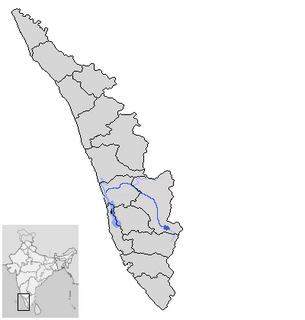
Periyar is the longest river and the river with the largest discharge potential in the Indian state of Kerala. It is one of the few perennial rivers in the region and provides drinking water for several major towns. The Periyar is of utmost significance to the economy of Kerala. It generates a significant proportion of Kerala's electrical power via the Idukki Dam and flows along a region of industrial and commercial activity. The river also provides water for irrigation and domestic use throughout its course besides supporting a rich fishery. Due to these reasons, the river has been named the "Lifeline of Kerala". Kochi city, in the vicinity of the river mouth draws its water supply from Aluva, an upstream site sufficiently free of seawater intrusion. Twenty five percent of Kerala's industries are along the banks of river Periyar. These are mostly crowded within a stretch of 5 kilometres (3 mi) in the Eloor-Edayar region (Udhyogamandal), about 10 kilometres (6 mi) north of Kochi harbor.
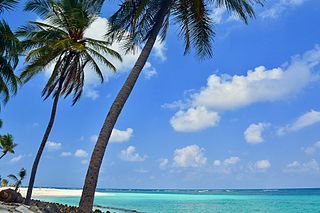
Lakshadweep ,a union territory of India comprising 36 islands of which 10 are inhabited in the Lakshadweep Sea, 200 to 440 km off the southwestern coast of India. The archipelago is administered as a union territory and district of India. They were also known as the Laccadive Islands, although geographically this is only the name of the central subgroup of the group. Lakshadweep means "one hundred thousand islands" in Sanskrit, Marathi and Malayalam. The islands form the smallest Union Territory of India and their total surface area is just 32 km2 (12 sq mi). The lagoon area covers about 4,200 km2 (1,600 sq mi), the territorial waters area 20,000 km2 (7,700 sq mi) and the exclusive economic zone area 400,000 km2 (150,000 sq mi). The region forms a single Indian district with 10 subdivisions. Kavaratti serves as the capital of the Union Territory and the region comes under the jurisdiction of Kerala High Court. The islands are the northernmost of the Lakshadweep-Maldives-Chagos group of islands, which are the tops of a vast undersea mountain range, the Chagos-Lakshadweep Ridge.

Andrott Island, also known as Androth Island, is a small inhabited island in the Union Territory of Lakshadweep, a group of 36 coral islands scattered in the Arabian Sea off the western coast of India It has a distance of 2,006 km (1,246 mi) south of the city of Delhi.
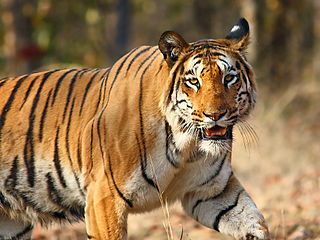
The Indian government has established 18 biosphere reserves to protect larger areas of natural habitat than a typical national park or animal sanctuary, and that often include one or more national parks or preserves, along with buffer zones that are open to some economic uses. Protection is granted not only to the flora and fauna of the protected region, but also to the human communities who inhabit these regions, and their ways of life.
South Button Island National Park is a national park located in the Andaman and Nicobar Islands off the coast of India, the total area of this protected island is about 5 km2 (2 sq mi). Along with the neighbouring islands of North Button and Middle Button, both also national parks, it forms part of the Rani Jhansi Marine National Park off the coast of South Andaman Island. South Button National Park in Andaman and Nicobar islands is the smallest National park in India.

The brown noddy or common noddy is a seabird in the family Laridae. The largest of the noddies, it can be told from the closely related black noddy by its larger size and plumage, which is dark brown rather than black. The brown noddy is a tropical seabird with a worldwide distribution, ranging from Hawaii to the Tuamotu Archipelago and Australia in the Pacific Ocean, from the Red Sea to the Seychelles and Australia in the Indian Ocean and in the Caribbean to Tristan da Cunha in the Atlantic Ocean. The brown noddy is colonial, usually nesting on elevated situations on cliffs or in short trees or shrubs. It only occasionally nests on the ground. A single egg is laid by the female of a pair each breeding season. In India the brown noddy is protected in the PM Sayeed Marine Birds Conservation Reserve.

Conservation reserves and community reserves in India are terms denoting protected areas of India which typically act as buffer zones to or connectors and migration corridors between established national parks, wildlife sanctuaries and reserved and protected forests of India. Such areas are designated as conservation areas if they are uninhabited and completely owned by the Government of India but used for subsistence by communities, and community areas if part of the lands are privately owned. Administration of such reserves would be through local people and local agencies like the gram panchayat, as in the case of communal forests.

India is home to a large variety of animals. It is a biodiversity hotspot with its various ecosystems ranging from the Himalayas in the north to the evergreen rain-forests in the south, the desert sands of the west to the marshy mangroves of the east. India, lying within the Indomalayan realm, is home to about 7.6% of mammal, 14.7% of amphibian, 6% of bird, 6.2% of reptilian, and 6.0% of flowering plant species. India's forest lands nurture about 500 species of mammals and 2000+ bird species. This richness of Indian wildlife has been celebrated since time immemorial. Four of India’s national symbols consist India’s mammals.
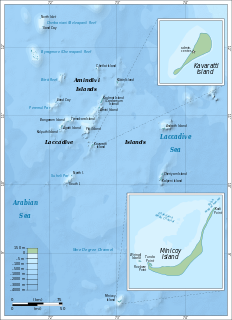
Kadmat Island, also known as Cardamom Island, is a coral island belonging to the Amindivi subgroup of islands of the Lakshadweep archipelago in India. Measuring 9.3 kilometres (5.8 mi) in length, the island has a lagoon with a width of 1.5 kilometres (0.93 mi) covering an area of 25 square kilometres (9.7 sq mi). The ecological feature of the island is of coral reef with seagrass, and marine turtles which nestle here. The Ministry of Environment and Forests (India) has notified the island as a marine protected area for ensuring conservation of the island's animal, plant, or other type of organism, and other resources.

Sea cucumber stocks have been overexploited in the wild, resulting in incentives to grow them by aquaculture. Aquaculture means the sea cucumbers are farmed in contained areas where they can be cultured in a controlled manner. In China, sea cucumbers are cultured, along with prawns and some fish species, in integrated multi-trophic systems. In these systems, the sea cucumbers feed on the waste and feces from the other species. In this manner, what would otherwise be polluting byproducts from the culture of the other species become a valuable resource that is turned into a marketable product.

Coral reefs in India are one of the most ancient and dynamic ecosystems of India. The coral reefs not only provide a sanctuary to a myriad of marine life but also play a key role in protecting the coastline from erosion. India has about 7517 km of coastline including islands but mainland coast is 6100 km.
PM Sayeed Marine Birds Conservation Reserve is the first protected area for marine birds in India. It is located in the Indian Union Territory of Lakshadweep. It was formed in 2020. It covers an area of 62 km2.
References
- 1 2 Badri Chatterjee (29 February 2020). "World's first sea cucumber conservation area in Lakshadweep". Hindustan Times. Retrieved 22 July 2020.
- ↑ KA Shaji (13 May 2020). "Lakshadweep gets world's first sea cucumber conservation reserve to curb smuggling into China". Scroll. Retrieved 22 July 2020.
| This article related to a location in the Indian union territory of Lakshadweep Islands is a stub. You can help Wikipedia by expanding it. |
| This article about a sea cucumber is a stub. You can help Wikipedia by expanding it. |